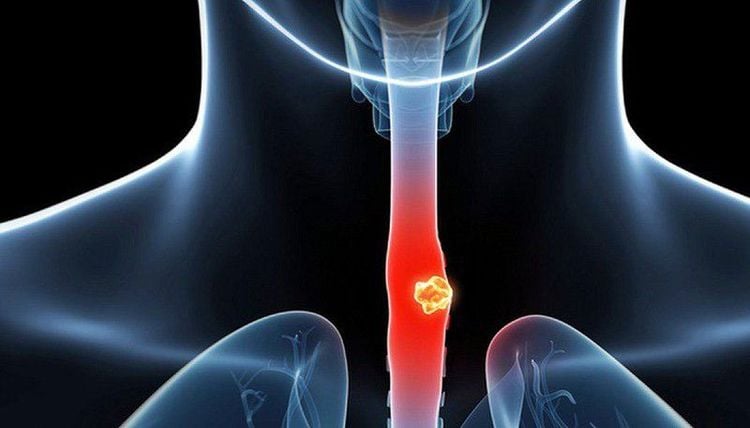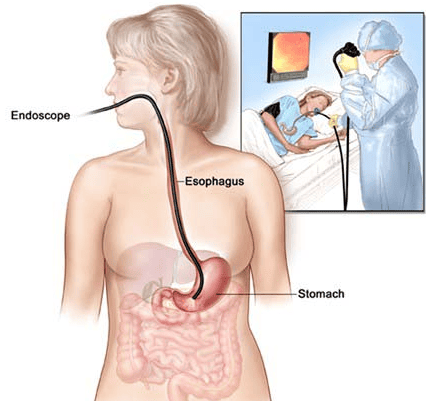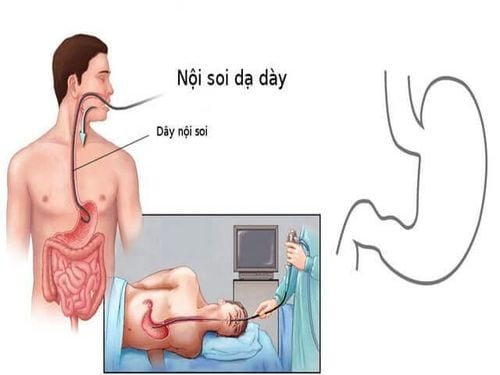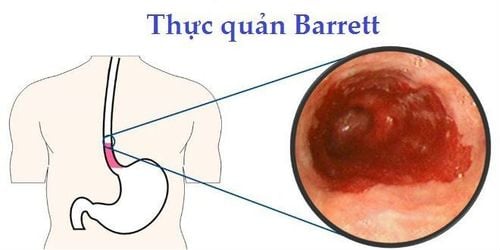This is an automatically translated article.
The demand for more effective methods of detecting early esophageal cancer features has led to intensive research in the field of artificial intelligence (AI). Deep learning (DL) has brought about breakthroughs in image, video and other aspects of processing, while complex neural networks (CNNs) have paved the way for detect high-resolution endoscopic images and videos.1. What is Artificial Intelligence?
Artificial Intelligence Definition: (AI: Artificial Intelligence) can be defined as a branch of computer science that deals with the automation of intelligent behaviors. AI is a part of computer science, and therefore it must be based on sound, applicable theoretical principles of the field.2. What is the difference between artificial intelligence AI, Machine Learning and Deep Learning?
Artificial Intelligence: The study of how to build machines capable of performing tasks that normally require human intelligence. AI (Artificial Intelligence) covers many areas of research, from genetic algorithms to expert systems, and provides scope for arguments about what constitutes AI. . Machine Learning: The process of teaching a computer to perform a task, instead of programming it how to perform that task step by step. Deep Learning: Is a subset of Machine Learning, capable of being different in some important respects from traditional shallow Machine Learning, allowing computers to solve a wide range of unsolvable complex problems. .3. Overview of the application of artificial intelligence to gastrointestinal endoscopy
Due to the rapid progression and poor prognosis of esophageal cancer (EC), the early detection and diagnosis of esophageal cancer is of great value in improving the prognosis for patients. However, early endoscopic detection of esophageal cancer, especially Barrett dysplasia or esophageal squamous dysplasia, is difficult. Therefore, the requirement for more effective methods of detecting early esophageal cancer features has led to intensive research in the field of artificial intelligence (AI). Deep learning (DL) has brought about breakthroughs in image, video and other aspects of processing, while complex neural networks (CNNs) have paved the way for detect high-resolution endoscopic images and videos.3.1 Introduction to Esophageal Cancer Esophageal cancer (EC) is the 8th most common cancer and the 6th leading cause of cancer death worldwide. Esophageal cancers mainly include esophageal adenocarcinoma (EAC) and esophageal squamous cell carcinoma (ESCC). Esophageal adenocarcinoma is the most common disease in Western countries, more than 40% of patients with esophageal adenocarcinoma are diagnosed after the disease has metastasized, and the 5-year survival rate is less than 5 years. 20%.

Ung thư thực quản (EC) là bệnh ung thư phổ biến thứ 8 và là nguyên nhân gây tử vong do ung thư đứng hàng thứ 6 trên toàn thế giới
3.3 Role of esophagogastroduodenoscopy in the diagnosis of early esophageal cancer Gastroscopy remains the primary way to detect early ESCC. However, the endoscopic features of these early lesions are subtle and easily missed compared with conventional white light endoscopy (WLE). Endocardial capillary rings (IPCLs), which are microvasculatures, are considered to be hallmarks of ESCC esophageal squamous cell carcinoma, because their morphological changes correlate with the depth of invasion of the esophageal squamous cell carcinoma. esophageal squamous cell carcinoma. Advanced endoscopic imaging modalities, such as endoscopic narrow band imaging (NBI), combined with magnified endoscopy, help improve imaging of cellular microvascular patterns in the esophageal mucosa of patients with esophageal squamous cell carcinoma. Although NBI has shown high sensitivity in detecting esophageal squamous cell carcinoma, its effectiveness in identifying these lesions is still limited.

Nội soi dạ dày vẫn là cách chính để phát hiện ESCC sớm
Conventional ML techniques are limited in their ability to process natural data in its raw form. In the early stages of research and development, model training was mainly with ML, through which researchers had to manually extract probable disease features based on clinical knowledge. The power of this computer-aided diagnosis (CAD) system is weak and insufficient to apply in clinical real-time diagnosis.
3.5 The Role of Convolutional Neural Networks (CNN) A Convolutional Neural Network (CNN) is a supervised machine learning model inspired by the visual cortex of the human brain that processes and recognizes images. Each artificial neuron is a computational unit and all of them are interconnected, forming a network. Using multiple network layers, CNN can extract key features from an image with minimal pre-processing and then provide final classification through fully connected layers as output. The increasing competition for performance has led to the increasing complexity of pooling layers which led to the concept of deep learning. The important aspect of deep learning is that these feature classes are not designed by human engineers. They are learned from data using a general-purpose learning process. Deep learning has brought breakthroughs in image, video and other aspects of processing, while iterative CNNs have shed light on the detection of endoscopic images and videos.
Currently, screening for gastrointestinal cancer is a scientific and effective measure for early detection of gastrointestinal cancer (esophageal cancer, stomach cancer, colon cancer) and giving a treatment plan. best treatment. Currently, Vinmec International General Hospital has a package of screening and early detection of cancers of the gastrointestinal tract (esophagus - stomach - colon) combined with clinical and paraclinical examination to bring the most accurate results. maybe.

Hiện nay, khám sàng lọc ung thư đường tiêu hoá là biện pháp khoa học và hiệu quả để phát hiện sớm ung thư đường tiêu hóa
Gastrointestinal examination with an oncologist (by appointment). Gastroscopy and colonoscopy with an NBI endoscope with anesthesia. Peripheral blood count (laser counter). Automated prothrombin time test. Automated thrombin time test. Activated Partial Thromboplastin Time (APTT) test using an automated machine. General abdominal ultrasound
Please dial HOTLINE for more information or register for an appointment HERE. Download MyVinmec app to make appointments faster and to manage your bookings easily.
References:Bray F , Ferlay J, Soerjomataram I, Siegel RL, Torre LA, Jemal A. Global cancer statistics 2018: GLOBOCAN estimates of incidence and mortality worldwide for 36 cancers in 185 countries. CA Cancer J Clin. 2018; 68 :394-424. [PubMed] [DOI] Hur C, Miller M, Kong CY, Dowling EC, Nattinger KJ, Dunn M, Feuer EJ. Trends in esophageal adenocarcinoma incidence and mortality. Cancer. two thousand and thirteen; 119 :1149-1158. [PubMed] [DOI] Thrift AP . The epidemic of oesophageal carcinoma: Where are we now? Cancer Epidemiol. 2016; 41 :88-95. [PubMed] [DOI] Lu-Ming Huang, Wen-Juan Yang, Zhi-Yin Huang, Cheng-Wei Tang, Jing Li, Artificial intelligence technique in detection of early esophageal cancer, World J Gastroenterol. Oct 21, 2020; 26(39): 5959-5969













